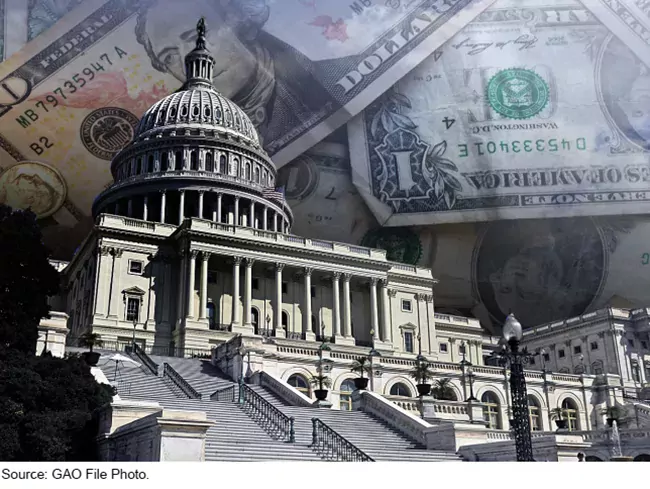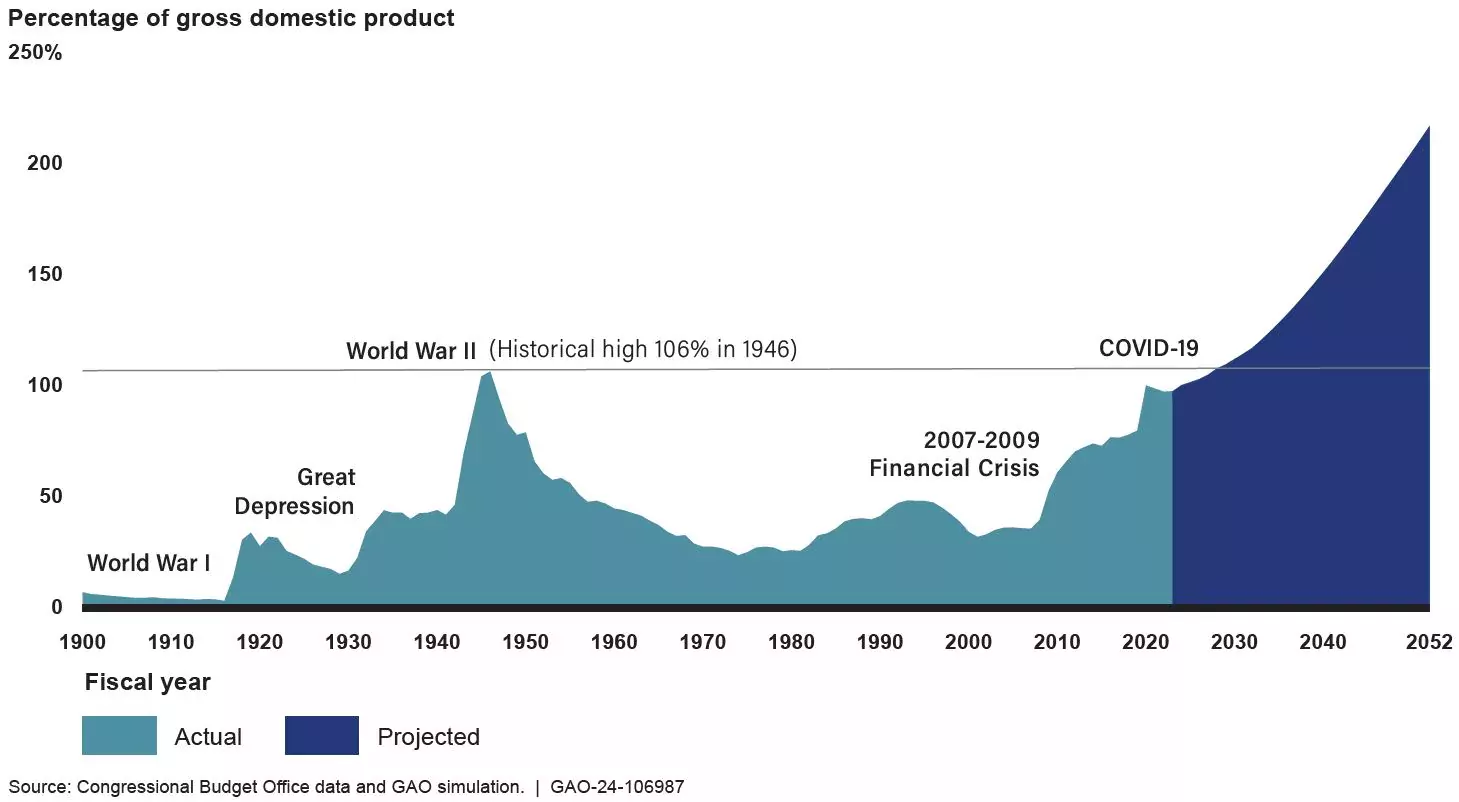A Warning About the Nation’s Fiscal Health
The federal government is on an unsustainable long-term fiscal path that poses serious economic, national security, and social challenges if not addressed. And the longer we wait to act, the more dire the consequences will be on the economy and the public.
Congress and the administration will need to make difficult budgetary and policy decisions to address the key drivers of federal debt. Reliable federal financial statements are critical to help policymakers make these important decisions. But we have reviewed the government’s bookkeeping and continue to find weaknesses that undermine its reliability.
Today’s WatchBlog post looks at our new reports on the Nation’s Fiscal Health and ongoing issues with the government’s Financial Statements.
Image

Our declining fiscal health
Our fiscal health is declining in large part because of rapidly growing debt levels relative to the size of the U.S. economy. Large annual budget deficits drive debt growth, as the government borrows to finance spending that exceeds revenues. For example, the federal budget deficit in FY 2023 was $1.7 trillion. This deficit is due to a $1 trillion gap between the revenue that the government collected and what it spent on government programs. It is also due to spending for interest payments on federal debt—a large and growing source of government spending.
"Congress and the administration must act to move the nation off the untenable long-term fiscal course on which it is currently operating,” said Gene L. Dodaro, Comptroller General of the United States and head of the GAO. “The federal debt level is growing at a rate that threatens the vitality of our nation’s economy and the safety and well-being of the American people. Both spending and revenue issues need to be addressed as part of a comprehensive long-term plan."
In fact, debt is projected to grow twice as fast as our economy over the next 30 years. Already, it is nearly the size of our economy. At the end of FY 2023, debt held by the public was about 97% of gross domestic product (GDP).
Perpetually rising debt as a share of GDP is unsustainable and has many direct and indirect implications on the economy and the public. All else equal, growing debt is likely to increase interest rates. Rising interest rates usually hurt Americans’ personal finances by lowering wages and increasing the cost to borrow money—for example to purchase a house or a car.
Additionally, rising debt increases the risk of a fiscal crisis. If investors lose confidence in American fiscal management, drastic tax increases and cuts to critical spending could ensue.
Debt Held by the Public Projected to Grow Faster Than GDP
Image

How did we get on this unsustainable fiscal path, and how do we get off it?
Our declining fiscal health isn’t because of one administration or one decision. Every year that the government runs a deficit—where it spends more than it collects in revenues (primarily taxes)—it must borrow to make up the difference. The federal government has run a deficit for decades.
Other factors have also contributed to our growing debt. For example, last year’s rising interest rates meant that it cost us more to borrow money.
We have consistently urged Congress to develop a plan for fiscal sustainability and we identified components needed for this plan to be effective. This plan would mean addressing unsustainable spending and revenue policies, and reducing the nation’s need to borrow.
An effective plan includes several key components. Among them:
- Review mandatory and discretionary spending and revenue—including tax expenditures, such as deductions and tax credits.
- Address financing gaps for Medicare and Social Security, both of which are supported by trust funds that will be depleted within 10 years.
Serious weaknesses in the government’s bookkeeping
The Financial Report of the U.S. Government consolidates the financial statements from each department—such as the Department of Defense. These statements provide a comprehensive look at the government’s finances.
This year, as in previous years, our audit of the federal government’s consolidated financial statements found several continuing issues. As a result, we are again unable to determine if the federal financial statements are reliable. Continuing issues include:
- Processes used for preparing these financial statements and accounting for transactions between federal agencies continue to be impaired
- Long-standing financial management problems persist at the Department of Defense, where accounting for transactions between federal agencies continues to be inadequate
- The Small Business Administration’s financial management deficiencies in their pandemic relief programs
- The Department of Education experienced problems with data used to estimate the costs of its loan programs
Also, we noted continuing federal payment errors (also known as improper payments)—mostly overpayments—totaling $236 billion across several agencies and programs.
"Congress and the Administration need reliable and complete financial information, within each agency and across the government as a whole, to govern effectively and efficiently,” said Mr. Dodaro.
Without this high-quality financial information, our country’s leaders are not best positioned to make decisions, like those needed on our nation’s fiscal health.
Learn more about our plan for improving the nation’s fiscal health, and our audit of the federal government’s books by reading our reports.
- GAO’s fact-based, nonpartisan information helps Congress and federal agencies improve government. The WatchBlog lets us contextualize GAO’s work a little more for the public. Check out more of our posts at GAO.gov/blog.
GAO Contacts
Related Products

GAO's mission is to provide Congress with fact-based, nonpartisan information that can help improve federal government performance and ensure accountability for the benefit of the American people. GAO launched its WatchBlog in January, 2014, as part of its continuing effort to reach its audiences—Congress and the American people—where they are currently looking for information.
The blog format allows GAO to provide a little more context about its work than it can offer on its other social media platforms. Posts will tie GAO work to current events and the news; show how GAO’s work is affecting agencies or legislation; highlight reports, testimonies, and issue areas where GAO does work; and provide information about GAO itself, among other things.
Please send any feedback on GAO's WatchBlog to blog@gao.gov.




